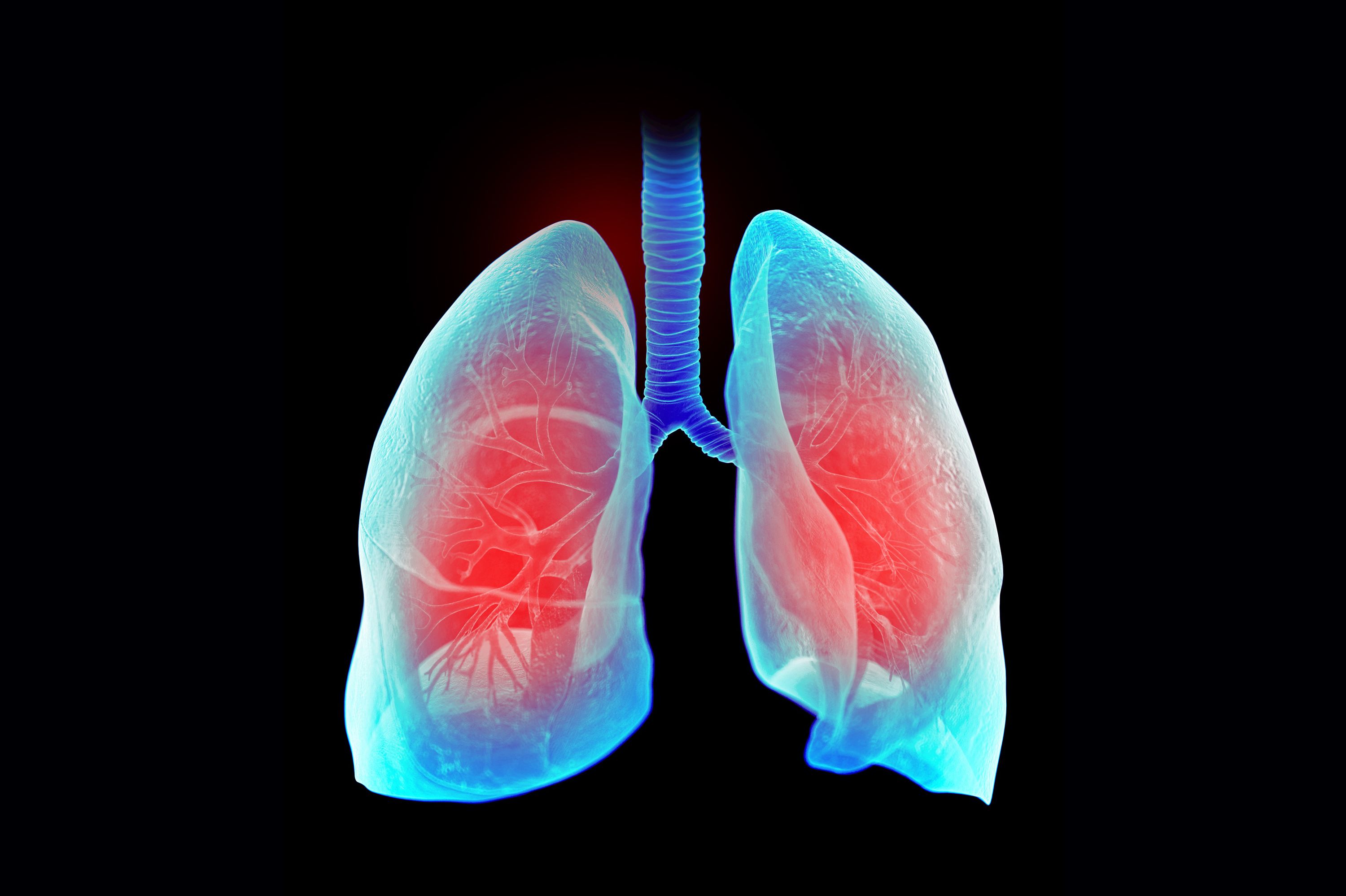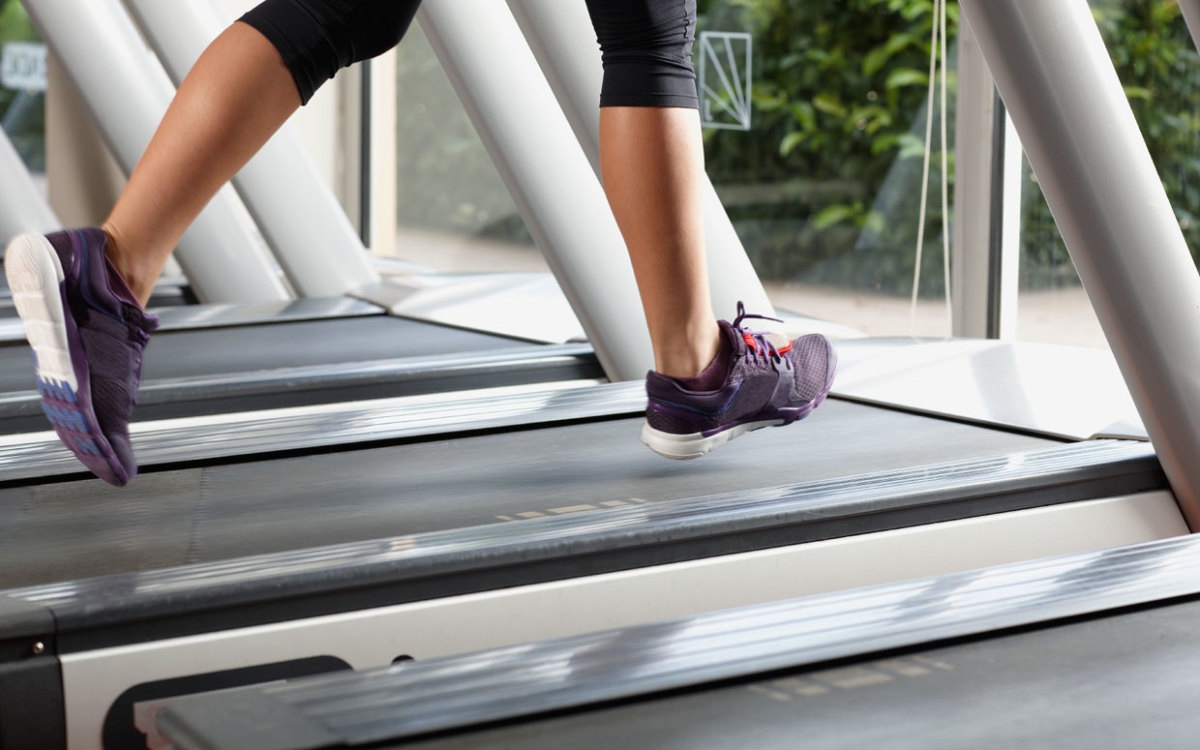

Featured
What Is Aerobic Exercise
Published: September 26, 2023
Discover the benefits of aerobic exercise and how it can help improve your cardiovascular health. Get inspired with our featured aerobic workouts and start your fitness journey today.
Introduction
Welcome to the world of aerobic exercise! If you’re looking to improve your fitness levels, boost your cardiovascular health, and have fun while staying active, aerobic exercise is the way to go. In this article, we will explore the ins and outs of aerobic exercise, its benefits, different types, how to get started, common mistakes to avoid, and tips for a successful routine.
Aerobic exercise, also known as cardio exercise, is any type of physical activity that raises your heart rate and increases your breathing rate. Unlike anaerobic exercise, which is characterized by short bursts of intense activity, aerobic exercise involves sustained moderate to high-intensity movements that engage large muscle groups over a prolonged period of time.
Aerobic exercise is an excellent way to improve overall fitness and maintain a healthy weight. It not only burns calories but also strengthens your heart and lungs, improves circulation, boosts mood, reduces stress, and enhances sleep quality.
Whether you’re a beginner taking your first steps into the world of fitness or an experienced athlete looking to mix up your workout routine, aerobic exercise offers a wide range of options to suit all fitness levels and personal preferences. From low-impact activities like walking and swimming to high-intensity workouts like running or dancing, there’s something for everyone.
In the next sections, we will delve deeper into the different types of aerobic exercise, how to get started, and some common mistakes to avoid. From there, we’ll provide you with tips to ensure a successful aerobic exercise routine that you can incorporate into your daily life.
So, get ready to put on your workout gear, lace up your sneakers, and embark on the journey to improve your fitness and overall well-being through aerobic exercise. Let’s get started!
Definition of Aerobic Exercise
Aerobic exercise is a form of physical activity that increases your heart rate and breathing rate for an extended period of time. Also referred to as cardiovascular exercise or cardio, this type of exercise focuses on engaging large muscle groups in rhythmic and repetitive movements. It is called “aerobic” because it requires oxygen to meet the energy demands of the body during the workout.
During aerobic exercise, the body utilizes oxygen to produce the energy required to sustain the activity. This energy production process involves the breakdown of carbohydrates and fats, which leads to the release of carbon dioxide and other byproducts that are expelled from the body through increased respiration and perspiration.
Aerobic exercise can vary in intensity, ranging from low-impact activities such as walking or gentle cycling to high-impact exercises like running or jumping rope. The duration of aerobic exercise typically ranges from 20 minutes to an hour, depending on individual fitness levels and goals. Consistency and frequency are key when it comes to reaping the numerous benefits of aerobic exercise.
Engaging in regular aerobic exercise has a multitude of advantages for your overall health and well-being. Apart from burning calories and helping with weight management, it strengthens the cardiovascular system, improves lung capacity, and enhances blood circulation. Not only does it increase the efficiency of oxygen delivery throughout the body, but it also improves the body’s ability to remove waste products.
Moreover, aerobic exercise plays a crucial role in maintaining mental and emotional health. It stimulates the release of endorphins, which are known as “feel-good” hormones, leading to improved mood, reduced stress, and increased mental clarity. It has also been shown to reduce the risk of chronic conditions such as heart disease, diabetes, and certain types of cancer.
Overall, aerobic exercise is an essential component of a healthy lifestyle. It offers a wide range of activities to choose from, ensuring that individuals of all ages and fitness levels can find something enjoyable and suitable. With dedication and consistency, incorporating aerobic exercise into your routine can lead to a healthier, fitter, and happier you.
Benefits of Aerobic Exercise
Aerobic exercise offers a multitude of benefits for both physical and mental health. Incorporating regular aerobic exercise into your routine can have a positive impact on various aspects of your well-being. Let’s explore some of the key benefits:
1. Improved Cardiovascular Health: Aerobic exercise strengthens the heart and improves cardiovascular fitness. It increases the efficiency of the heart in pumping blood, lowers resting heart rate, and improves blood circulation throughout the body. This, in turn, reduces the risk of heart disease, high blood pressure, and stroke.
2. Weight Management: Aerobic exercise is an effective way to burn calories and maintain a healthy weight. It can help in losing excess body fat, improving body composition, and boosting metabolism. Regular aerobic workouts combined with a balanced diet can contribute to achieving and maintaining a healthy weight.
3. Increased Lung Capacity: Aerobic exercise improves lung function and increases lung capacity. It enhances the ability to take in and utilize oxygen, making physical activities feel less strenuous over time.
4. Mental Health and Mood Enhancement: Engaging in aerobic exercise releases endorphins, which are natural mood elevators and stress-relievers. Regular aerobic workouts can reduce symptoms of anxiety and depression, improve sleep quality, boost self-esteem, and enhance overall mental well-being.
5. Stronger Immune System: Aerobic exercise strengthens the immune system, making you less susceptible to common illnesses and infections. It can also reduce the risk of chronic diseases such as diabetes and certain types of cancer.
6. Increased Energy Levels: Regular aerobic exercise improves stamina and endurance, leading to increased energy levels throughout the day. It promotes better oxygen flow to the muscles and organs, allowing you to perform daily tasks with less effort.
7. Better Cognitive Function: Aerobic exercise has a positive impact on brain health. It improves cognitive function, memory, and attention span. Regular aerobic workouts can enhance creativity, problem-solving skills, and overall mental performance.
8. Social and Emotional Well-being: Participating in group aerobic activities or classes can provide an opportunity to socialize and connect with others who share similar fitness goals. This can lead to improved social and emotional well-being, a sense of belonging, and increased motivation to stay active.
Aerobic exercise is a versatile and enjoyable way to improve physical fitness and overall well-being. Whether you prefer running, swimming, dancing, cycling, or any other form of aerobic activity, incorporating it into your routine can have a tremendous positive impact on your health and quality of life.
Types of Aerobic Exercise
When it comes to aerobic exercise, there is a wide variety of activities to choose from. Whether you prefer exercising indoors or outdoors, alone or in a group, at a high or low intensity, there is something for everyone. Let’s explore some popular types of aerobic exercise:
1. Running and Jogging: Running and jogging are excellent aerobic exercises that require minimal equipment. They can be done outdoors in parks, on trails, or even on a treadmill. Running engages multiple muscle groups, improves cardiovascular fitness, and burns a significant number of calories.
2. Swimming: Swimming is a low-impact, full-body workout that is gentle on the joints. It increases heart rate, builds muscle strength, and improves endurance. Swimming also provides a refreshing and enjoyable way to stay cool during hot weather.
3. Cycling: Whether it’s indoor cycling on a stationary bike or outdoor cycling, this activity is a great way to get your heart rate up. Cycling helps strengthen the lower body muscles, particularly the quadriceps, hamstrings, and glutes. It can be done at your own pace, making it suitable for individuals of all fitness levels.
4. Dancing: Dancing is a fun and rhythmic aerobic exercise that can be done in various styles like Zumba, hip hop, salsa, or ballet. It not only improves cardiovascular health but also enhances coordination, flexibility, and balance. Dancing is a great way to express yourself while burning calories.
5. Jumping Rope: Jumping rope is a simple yet highly effective aerobic exercise. It helps improve agility, coordination, and cardiovascular endurance. Jumping rope can be done virtually anywhere, making it a convenient and affordable workout option.
6. High-Intensity Interval Training (HIIT): HIIT involves short bursts of intense exercise followed by periods of rest or lower-intensity activity. This type of aerobic exercise is effective for burning calories, improving endurance, and increasing metabolic rate. HIIT workouts can include exercises like burpees, mountain climbers, and sprints.
7. Walking: Walking is a low-impact aerobic exercise that can be done virtually anywhere, making it accessible to people of all ages and fitness levels. It is a great way to increase daily activity levels, improve cardiovascular health, and burn calories. Incorporating walking into your routine can be as simple as taking the stairs instead of the elevator or going for a brisk walk during your lunch break.
8. Group Fitness Classes: Joining group fitness classes such as aerobics, step aerobics, kickboxing, or cardio dance can add a social element to your aerobic exercise routine. These classes offer a structured and energetic workout led by an instructor, making it easy to stay motivated and enjoy the camaraderie of exercising with others.
These are just a few examples of the many types of aerobic exercise available. The key is to choose an activity that you enjoy and fits your fitness level and goals. Remember to start slowly, gradually increase intensity, and listen to your body to prevent injuries. Mixing up your aerobic workouts to include a variety of exercises can keep things exciting and help you stay committed to your fitness journey.
How to Get Started with Aerobic Exercise
Embarking on an aerobic exercise routine can seem overwhelming, especially if you’re new to fitness or haven’t been active for a while. However, with the right approach and mindset, getting started can be simple and enjoyable. Here are some steps to help you begin your aerobic exercise journey:
1. Consult with Your Healthcare Professional: Before starting any new exercise program, it’s essential to consult with your healthcare professional, especially if you have any underlying health conditions or concerns. They can provide guidance on what types and intensities of aerobic exercise are safe and suitable for you.
2. Set Clear Goals: Determine your goals for aerobic exercise. These can include improving cardiovascular fitness, losing weight, increasing endurance, or simply staying active and healthy. Setting realistic and measurable goals will help keep you motivated and focused on your progress.
3. Choose Activities You Enjoy: Select aerobic activities that you enjoy and that align with your interests. Whether it’s swimming, dancing, cycling, or any other form of exercise, finding activities that you genuinely enjoy will make it easier to stay committed and consistent.
4. Start Slowly and Gradually Increase Intensity: Begin with low to moderate intensity workouts and gradually increase the duration and intensity of your aerobic exercise sessions. This allows your body to adapt and minimize the risk of injury. Aim for at least 150 minutes of moderate-intensity aerobic exercise per week, or 75 minutes of vigorous-intensity exercise if you’re up for a challenge.
5. Warm-Up and Cool Down: Prior to your aerobic workouts, warm up by engaging in light movements, such as walking or gentle stretching, to increase blood flow to your muscles and prepare your body for exercise. Afterward, cool down by gradually decreasing your intensity and incorporating stretches to help prevent muscle soreness and promote flexibility.
6. Listen to Your Body: Pay attention to how your body feels during and after exercise. If you experience pain, dizziness, or any excessive discomfort, it’s important to ease off and modify your workout as needed. Push yourself, but also know your limits and respect your body’s signals.
7. Find Accountability and Support: Having someone to exercise with or an accountability partner can help keep you motivated and on track. Consider joining a fitness class, finding a workout buddy, or participating in online fitness communities where you can share your progress, challenges, and victories.
8. Prioritize Recovery: Adequate rest and recovery are essential for maximizing the benefits of aerobic exercise. Allow your body time to rest and repair by incorporating rest days into your weekly routine. Also, remember to hydrate well, eat a balanced diet, and get enough sleep to support your overall fitness journey.
Getting started with aerobic exercise is all about taking that first step and committing to making regular physical activity a part of your lifestyle. Remember that every small effort counts, and progress happens gradually. Stay consistent, stay motivated, and enjoy the journey towards a healthier and fitter you!
Common Mistakes to Avoid in Aerobic Exercise
Aerobic exercise is a fantastic way to improve your fitness and overall well-being. However, it’s essential to approach it with proper technique and avoid common mistakes that could hinder your progress or lead to injury. Here are some common mistakes to avoid in aerobic exercise:
1. Skipping Warm-Up and Cool-Down: Many people overlook the importance of warming up and cooling down before and after aerobic exercise. Skipping these crucial steps can increase the risk of injury and lead to muscle soreness. Always take the time to properly warm up your muscles with dynamic movements and cool down with static stretching to prepare and recover your body.
2. Pushing Too Hard, Too Soon: One common mistake is pushing yourself too hard or progressing too quickly. While it’s important to challenge yourself, it’s equally important to listen to your body and gradually increase intensity, duration, or frequency. Pushing too hard without allowing for proper adaptation can lead to burnout or injury.
3. Poor Form and Technique: Incorrect form and technique can compromise the effectiveness of your aerobic exercises and increase the risk of strain or injury. Ensure you have proper posture, alignment, and movement patterns for each exercise. If unsure, consider working with a qualified fitness professional for guidance.
4. Neglecting Strength Training: While aerobic exercise is crucial for cardiovascular health, it’s essential to include strength training in your routine. Strength training helps to build muscle, improve overall body composition, and support your aerobic workouts. Neglecting strength training can result in muscular imbalances and limit the benefits you can achieve.
5. Doing Too Much, Too Often: Overtraining can be counterproductive and lead to fatigue, muscle soreness, and increased risk of injury. Your body needs time to rest and recover. Aim for a well-rounded exercise routine that includes regular rest days to allow your body to rebuild and adapt to the demands of exercise.
6. Failing to Listen to Your Body: Your body gives you signals when something doesn’t feel right. Ignoring these signals or pushing through pain can lead to more significant injuries or setbacks. It’s crucial to listen to your body, modify exercises as needed, and seek medical advice if you experience persistent pain or discomfort.
7. Relying Too Much on a Single Exercise: While it’s great to find an aerobic activity you enjoy, relying solely on one exercise can lead to plateauing and boredom. Mix up your routine by trying different types of aerobic exercises or incorporating cross-training. This will challenge your body in new ways, keep things interesting, and prevent overuse injuries.
8. Neglecting Recovery and Self-Care: Recovery is just as important as the exercise itself. Make sure to prioritize proper rest, adequate sleep, and nutrition to support your body’s recovery and repair processes. Also, don’t forget to incorporate self-care practices like foam rolling, stretching, and relaxation techniques to help prevent muscle tightness and promote overall well-being.
Avoiding these common mistakes will help you get the most out of your aerobic exercise routine. By taking a mindful and balanced approach, you can improve your fitness, reduce the risk of injuries, and enjoy the benefits of staying active for the long term.
Tips for a Successful Aerobic Exercise Routine
Building a successful aerobic exercise routine is essential for achieving your fitness goals and maintaining a healthy lifestyle. To maximize the benefits and make the most of your workouts, consider the following tips:
1. Set a Schedule: Consistency is key when it comes to aerobic exercise. Set a regular schedule for your workouts, whether it’s daily, a few times a week, or whatever works best for you. Having a routine will help you stay motivated and make exercise a non-negotiable part of your day.
2. Plan for Variety: Keep your aerobic exercise routine diverse and engaging by incorporating different activities and workouts. This not only prevents boredom but also targets different muscle groups and challenges your body in new ways. Try mixing up cardio machines, outdoor activities, group classes, and high-intensity interval training (HIIT) workouts.
3. Find a Workout Partner: Exercising with a friend or a workout partner can provide support, motivation, and accountability. Having someone to share your fitness journey with can make it more enjoyable and help you stay consistent with your workouts.
4. Gradually Increase Intensity: As your fitness level improves, gradually increase the intensity of your aerobic workouts. This can be done by increasing the duration, intensity, or resistance of your exercises. Progressive overload will challenge your body and ensure continued progress.
5. Hydrate Properly: Stay hydrated before, during, and after your aerobic exercise sessions. Proper hydration is crucial for optimal performance and recovery. Drink water before you start your workout, carry a water bottle with you, and replenish fluids after your workout.
6. Wear Comfortable and Supportive Shoes: Invest in a good pair of athletic shoes that provide support, cushioning, and stability. The right footwear will not only enhance your performance but also help prevent injuries associated with improper footwear.
7. Listen to Music or Podcasts: Create a workout playlist or listen to motivational podcasts during your aerobic workouts. Music and engaging content can boost your mood, distract from fatigue, and make your exercise sessions more enjoyable.
8. Keep Track of Your Progress: Keep a record of your workouts, including duration, intensity, and any milestones you achieve. This helps you monitor your progress, identify areas of improvement, and stay motivated as you see your fitness levels improve over time.
9. Prioritize Rest and Recovery: Allow your body sufficient time to rest and recover between workouts. Adequate rest is crucial for preventing overuse injuries and ensuring your body can repair and rebuild muscles. Listen to your body and don’t hesitate to take rest days as needed.
10. Celebrate Your Achievements: Recognize and celebrate your achievements along the way. Whether it’s completing a new distance, hitting a time goal, or simply sticking to your routine consistently, acknowledge your progress and give yourself credit. This positive reinforcement will fuel your motivation and help you stay committed to your aerobic exercise routine.
By incorporating these tips into your aerobic exercise routine, you can create a successful and enjoyable experience. Remember to keep pushing your limits, listening to your body, and adapting your routine as you progress. With dedication and consistency, you’ll achieve your fitness goals and enjoy the numerous benefits of aerobic exercise.
Conclusion
Congratulations on completing this journey through the world of aerobic exercise! We’ve explored the definition of aerobic exercise, its benefits, different types, how to get started, common mistakes to avoid, and tips for success. Aerobic exercise provides a vast array of advantages for both physical and mental well-being.
By engaging in regular aerobic exercise, you can improve your cardiovascular health, maintain a healthy weight, increase lung capacity, boost mood and mental well-being, strengthen your immune system, and enhance overall energy levels. The variety of aerobic exercises available ensures that there is something for everyone, no matter your fitness level or personal preferences.
Remember to approach aerobic exercise with proper form and technique, gradually increase intensity, and find activities you enjoy. Incorporating strength training, listening to your body, and prioritizing rest and recovery are essential for a balanced and successful routine.
Now it’s time to lace up your shoes, put on your workout gear, and embark on your own aerobic exercise journey. Start small, be consistent, and be proud of every step you take towards improving your fitness and overall well-being. Whether you’re running, swimming, cycling, dancing, or any other aerobic activity, enjoy the process and have fun!
Here’s to a healthier, fitter, and happier you through the power of aerobic exercise!









